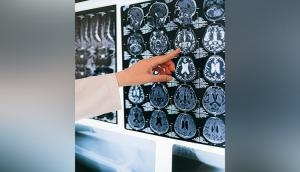
The world of female orgasm is ripe with mystery and magic, which left even great minds like Aristotle and Hippocrates scratching their heads noting that women could get pregnant sans ever reaching a climax.
Now, scientists at Yale and the Cincinnati Children's Hospital have provided fresh insights on the subject by examining evolving traits across different species.
"Prior studies have tended to focus on evidence from human biology and the modification of a trait rather than its evolutionary origin," said researcher Gunter Wagner.
Instead, Wagner and researcher Mihaela Pavlicev propose that the trait that evolved into human female orgasm had an ancestral function in inducing ovulation.
As there is no apparent association between orgasm and the number of offspring or successful reproduction in humans, the scientists focused on a specific physiological trait that accompanies human female orgasm, the neuro-endocrine discharge of prolactin and oxytocin, and looked for this activity in other placental mammals. They found that in many mammals this reflex plays a role in ovulation.
In spite of the enormous diversity of mammalian reproductive biology, some core characteristics can be traced throughout mammalian evolution, note the researchers. The female ovarian cycle in humans, for instance, is not dependent upon sexual activity.
However, in other mammalian species ovulation is induced by males. The scientists' analysis shows male-induced ovulation evolved first and that cyclical or spontaneous ovulation is a derived trait that evolved later.
The scientists suggest that female orgasm may have evolved as an adaptation for a direct reproductive role - the reflex that, ancestrally, induced ovulation. This reflex became superfluous for reproduction later in evolution, freeing female orgasm for secondary roles.
A comparative study of female genitalia also revealed that, coincidental with the evolution of spontaneous ovulation, the clitoris was relocated from its ancestral position inside the copulatory canal. This anatomical change made it less likely that the clitoris receives adequate stimulation during intercourse to lead to the neuro-endocrine reflex known in humans as orgasm.
"Homologous traits in different species are often difficult to identify, as they can change substantially in the course of evolution," said Pavlicev. "We think the hormonal surge characterizes a trait that we know as female orgasm in humans. This insight enabled us to trace the evolution of the trait across species."
Such evolutionary changes are known to produce new functions, as is well established for feathers, hair, or swim bladders, etc., which originated for one purpose and were co-opted into secondary functions later.
The study appears in the journal JEZ-Molecular and Developmental Evolution.
-With agency inputs







![BJP's Kapil Mishra recreates Shankar Mahadevan’s ‘Breathless’ song to highlight Delhi pollution [WATCH] BJP's Kapil Mishra recreates Shankar Mahadevan’s ‘Breathless’ song to highlight Delhi pollution [WATCH]](https://images.catchnews.com/upload/2022/11/03/kapil-mishra_240884_300x172.png)

![Anupam Kher shares pictures of his toned body on 67th birthday [MUST SEE] Anupam Kher shares pictures of his toned body on 67th birthday [MUST SEE]](https://images.catchnews.com/upload/2022/03/07/Anupam_kher_231145_300x172.jpg)






